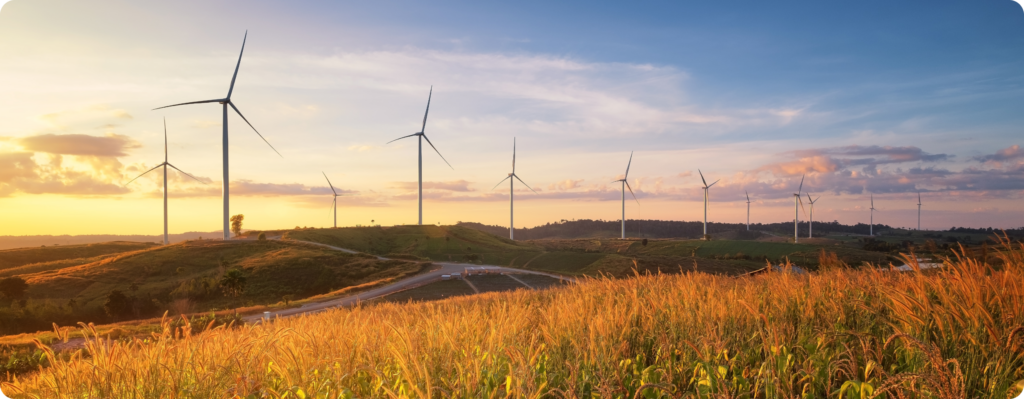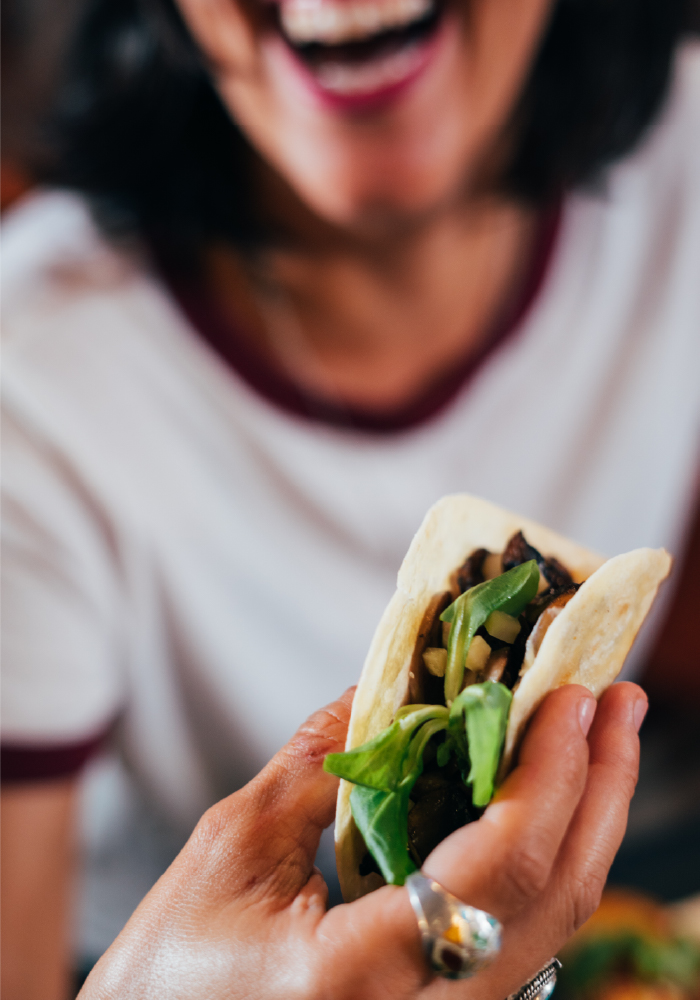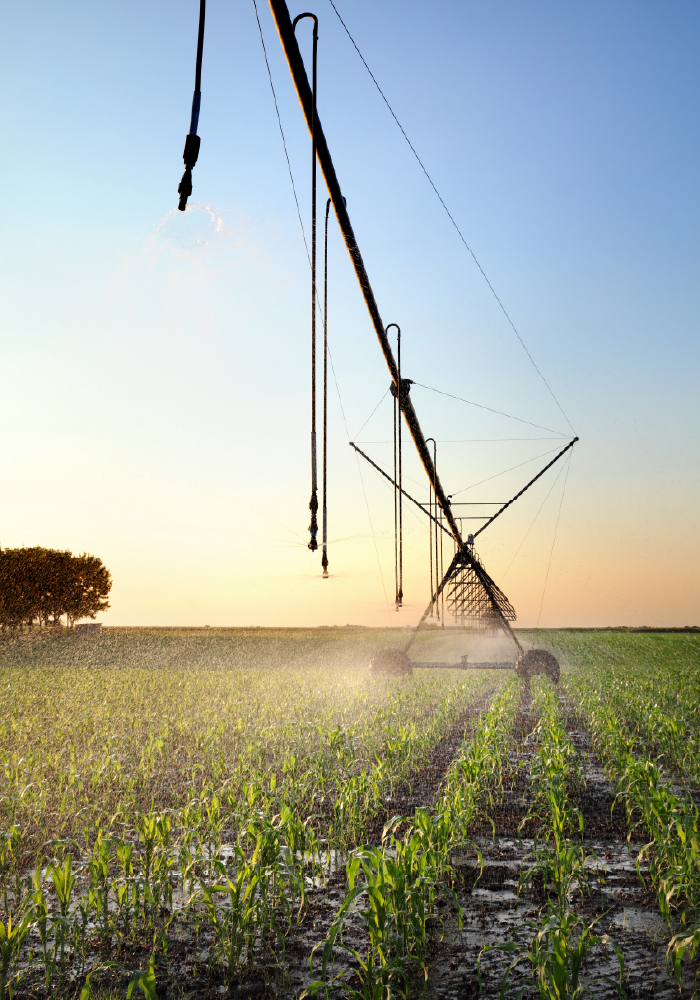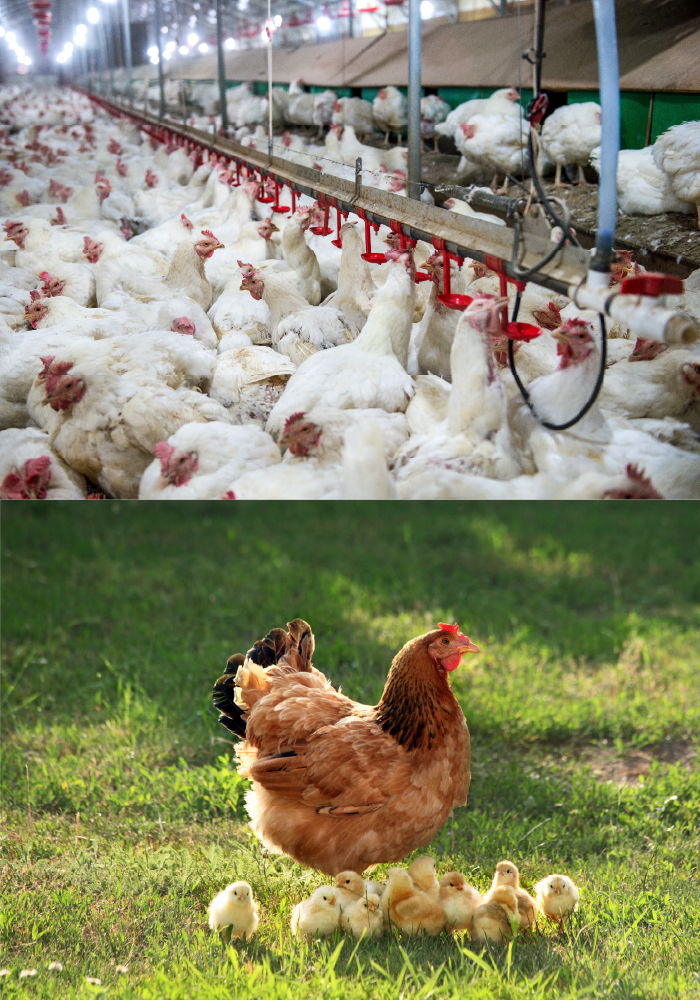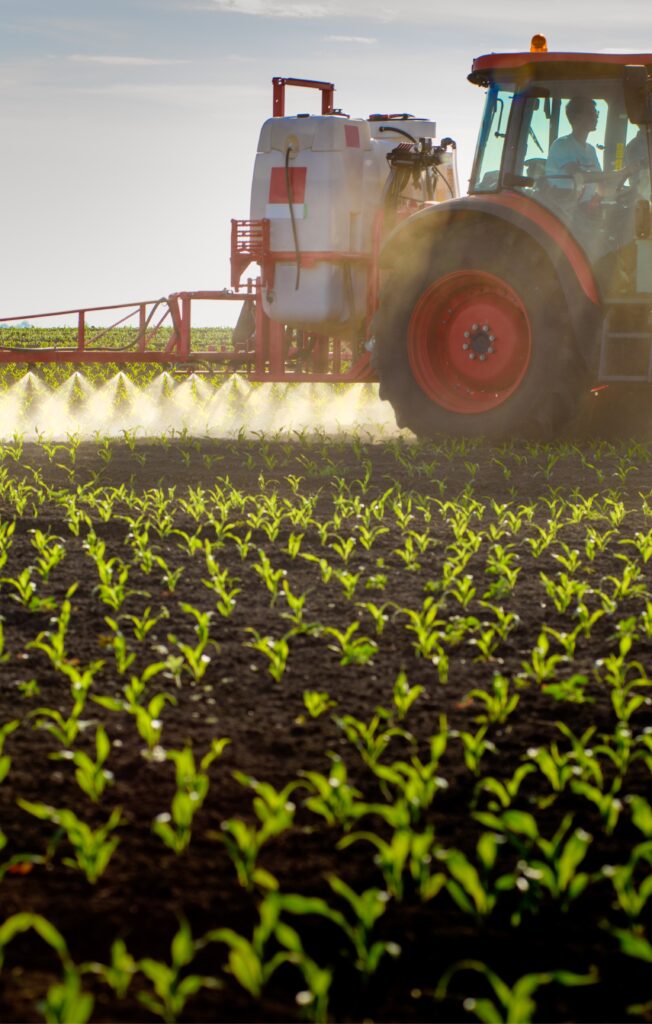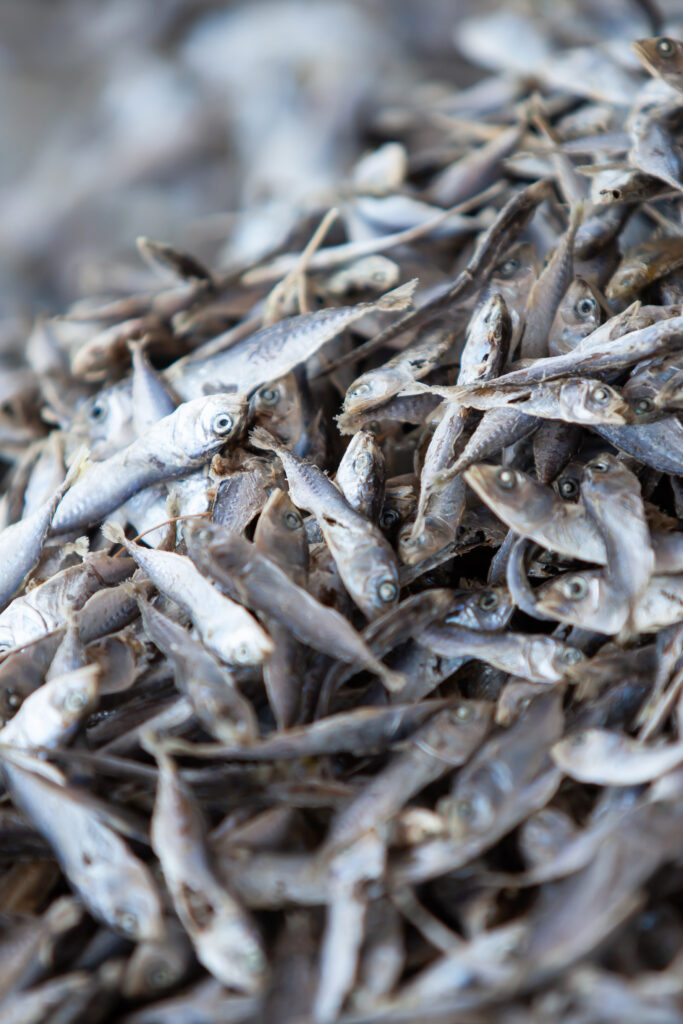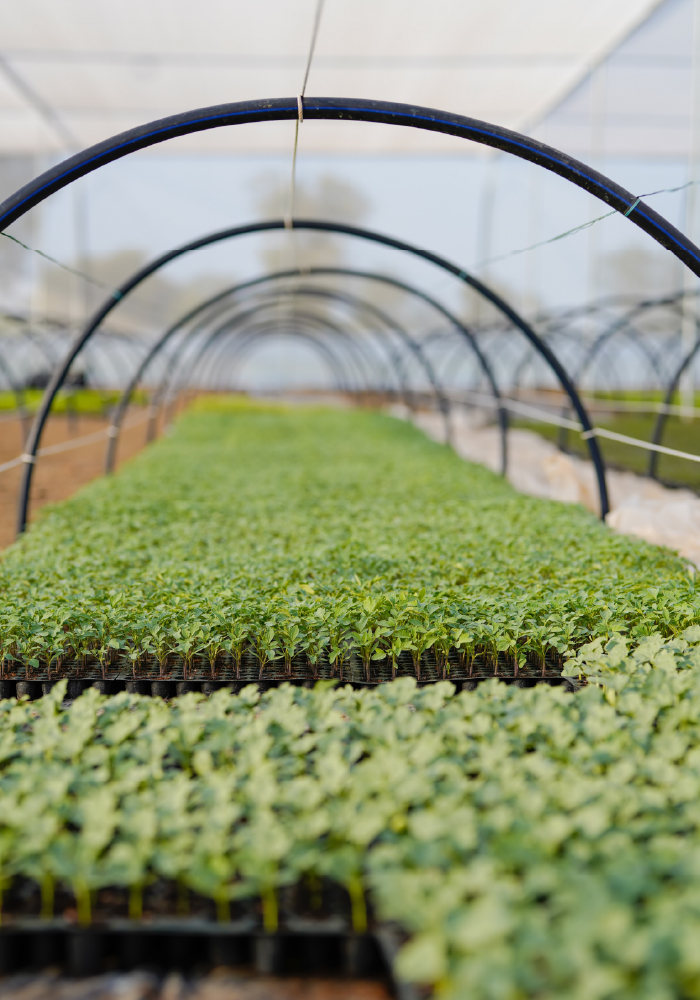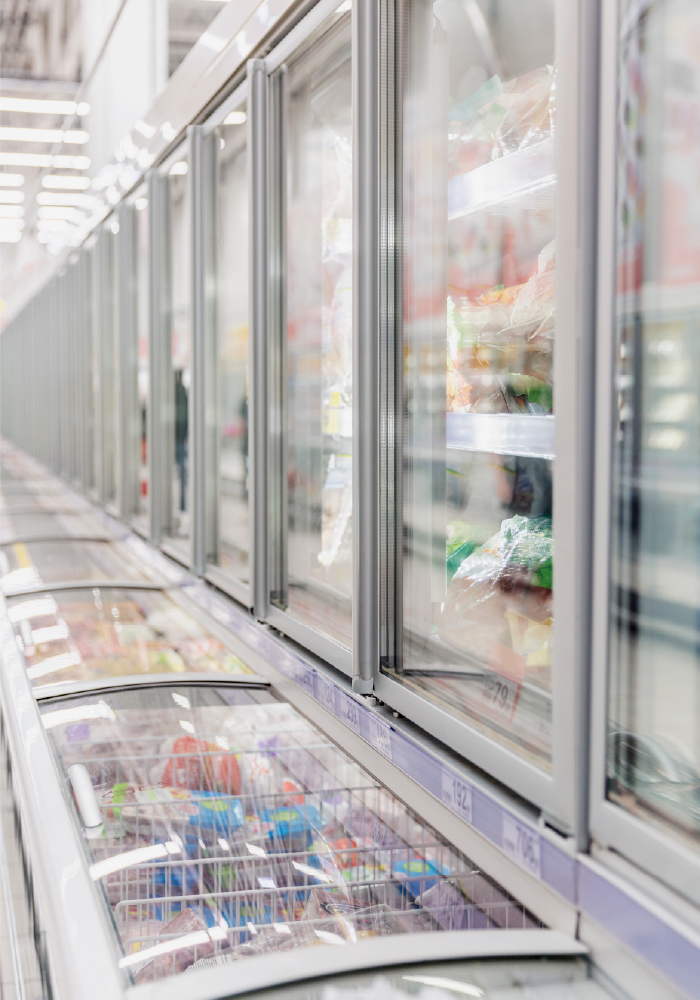FAQ
Frequently asked questions

ECO-SCORE® by Beelong Methodology

ECO-SCORE® by Beelong for brands

Services for restaurants

Beelong Calculator

About Beelong
What is ECO-SCORE® by Beelong?
ECO-SCORE® by Beelong is an environmental rating system based on data from Ecoinvent, the World Food Database and Agribalyse that takes into account climate change, freshwater and marine pollution, water consumption, and land use. These are then enriched with elements missing from these databases, such as biodiversity, animal welfare and packaging.
It integrates the environmental impact from the fork to the plate by taking into account all the ingredients of a food product and their origin, their methods of cultivation and breeding or fishing, the distances traveled, the modes of transport and the modes of refrigeration.
ECO-SCORE® by Beelong is powered by real food product data and reflects all major issues with a high level of accuracy. It provides transparent information to consumers and companies to act and contribute to the food transition.
Who evaluates the products?
Beelong is a Lausanne-based company specializing in the analysis, popularization and communication of the environmental impact of food products. The company has developed ECO-SCORE® by Beelong that takes into account the most up-to-date scientific data possible as well as information available on the market. In addition, Beelong organizes and refines information on food products, controls the quality of information provided by brands, and ensures that the most up-to-date data possible is always used.
How is food product information collected?
Food product information can be obtained in two ways:
1. Via les recherches spontanées de Beelong ou dans le cadre des études effectuées pour les restaurants. Les informations sont obtenues via les fiches techniques des produits, via les sites internet des marques et des distributeurs, ou via des échanges directement avec les marques et producteurs. Des informations sont souvent manquantes et les ECO-SCORE® by Beelong sont communiqués à titre indicatif. Ils apparaissent comme « non certifié » dans la Base produit et dans le calculateur. Une bannière orange identifie également les produits « non certifié » sur les fiches techniques Beelong.
2. Via the transmission of all the information directly by the brand. These products appear as "certified" in the Product Database and in the calculator. A green banner also identifies the "certified" products on the Beelong data sheets.
What is the operating methodology of ECO-SCORE® by Beelong? ECO-SCORE® by Beelong ?
The summary of ECO-SCORE® by Beelong methodology can be downloaded herePlease visit beelong.ch for more information. ECO-SCORE® by Beelong methodology is constantly evolving as scientific knowledge, raw data accuracy and access to food system data evolve.
How is the ECO-SCORE® by Beelong graded on the A to E scale?
All foods are evaluated on the same criteria and on the same scale from A+ (low environmental impact) to E- (high environmental impact).
All the ingredients that make up the product are first evaluated and then converted according to their importance (kcal) in the final product. Finally, ECO-SCORE® by Beelong is evaluated using an additional bonus-malus system, which awards or removes points based on the manufacturer's environmental efforts. The detailed ECO-SCORE® by Beelong methodology is available here. here.
What are the criteria and their weighting in the final ECO-SCORE® by Beelong?
La base ECO-SCORE® by Beelong est le « score environnement ». Celui-ci est composé des indicateurs suivants :
- Climate change [kg CO2 eq] 49%
- Freshwater pollution (eutrophication) [kg P eq] 6%
- Marine pollution (eutrophication) [kg N eq] 7%
- Water consumption [m3/kg], combined with the hydric stress of the producing country [m3 eq] 20%
- Land use [m2.a] 18%
The weighting of each of these indicators is that proposed by the PEF method (Product Environmental Footprint). This is based on the importance of the environmental issues and the level of robustness of each indicator.
Each product gets a score out of 100 points.
On this basis, the following indicators operate as bonuses or maluses:
- Agricultural labels of ingredients
- The presence of endangered species (fish) in the composition
- The packaging
- The environmental policy of the producing country
- The corporate policy of the brand or producer
The number of final points is transposed on a scale from A+ to E-.
The detailed methodology of the eco-score is available here.
Why aren't more criteria taken into account by ECO-SCORE® by Beelong? ECO-SCORE® by Beelong ?
ECO-SCORE® by Beelong captures the maximum amount of information currently available on food products.
The lack of traceability and transparency in the food system, however, does not always allow for all good agricultural and industrial practices to be valued in terms of sustainability. But over time, more and more information is becoming available. This is why ECO-SCORE® by Beelong methodology is updated every two years. If you have any suggestions for improvement, please write to info@beelong.ch
What happens if information is not available on food products?
In case of missing information (e.g. origin of ingredients, production methods , breeding program, cultivation method, fishing technique, etc.) Beelong makes conservative assumptions as far as possible. If this is not possible, the data is considered as "not communicated " and the worst value is used for the criterion concerned.
When the recipes (lists of ingredients and proportions of ingredients in the finished product) are not known, Beelong uses standard recipes according to an internal database of the main ingredients and proportions which have been observed.
Is ECO-SCORE® by Beelong similar to a Life Cycle Assessment (LCA)?
ECO-SCORE® by Beelong methodology is based on a life cycle analysis (LCA) from field to shelf. The data is derived from the most up-to-date versions of the WFLDB, Ecoivent and Agribalyse databases, as well as from actual data collected on food products (composition, production methods, distances traveled, etc.). ECO-SCORE® by Beelong also takes into account parameters not usually considered in LCAs, such as the impact on biodiversity and animal welfare.
Les étapes comptabilisées pour le calcul de l’empreinte carbone, de l’utilisation du sol, de la consommation et de la pollution de l’eau sont : la production agricole de chaque ingrédient, la culture sous serre chauffée ou non, le transport des ingrédients et du produit fini (distances parcourues, modes de transport et modes de réfrigération), et l’emballage du produit fini. ECO-SCORE® by Beelong propose une information agrégée concernant l’impact environnemental d’un produit alimentaire afin d’accompagner la restauration, l’industrie alimentaire et la population pour le réduire. Et cela avec pragmatisme, en utilisant les données scientifiques les plus actuelles possibles ainsi que les informations disponibles sur le marché.
How is the carbon footprint (CO2-eq.) calculated?
The calculated carbon footprint takes into account the agricultural production of each ingredient, the cultivation under heated or unheated greenhouses (fruits, vegetables and herbs), the type of cut (meats), the transport distance of each raw material to the place of elaboration and their mode of transport and refrigeration or not, the transport distance of the finished product to the country of consumption and its mode of transport and refrigeration / freezing or not, and the main primary packaging.
How are agricultural labels evaluated?
Labels are currently the main information that tells consumers how the product was grown, raised or fished.
The specifications of more than one hundred agricultural labels were evaluated. Environmental measures, in particular those aimed at promoting biodiversity, are listed.
The agricultural labels are classified according to the environmental rigor of their specifications, i.e., according to the production conditions required of farmers who wish to label their products. The number of environmental criteria in each specification, in particular the measures to promote biodiversity, per category of product concerned, was therefore evaluated. 104 criteria are currently identified and taken into account. The maximum number of possible measures currently corresponds to the Bio Bourgeon (Switzerland), Demeter (Switzerland), or equivalent labels.
What production information is included in ECO-SCORE® by Beelong and how is it obtained?
For each ingredient of agricultural origin: if the country of production is known, certain criteria of the agricultural legislation of the producing country are taken into consideration. For example, for Swiss products, the criteria of the Required Environmental Services are taken into account. In addition, ECO-SCORE® by Beelong takes into account the environmental policy of each country and its impact on the environment via the Environmental Performance Index, which aggregates 40 performance indicators.
Agricultural labels also provide information on a number of criteria related to the production method and determined in their specifications. ECO-SCORE® by Beelong is based on a ranking of agricultural labels according to the number of environmental criteria.
Additional elements are considered depending on the type of ingredient:
- For land-based farms, the method of animal husbandry is taken into account if known. For example, SST/ROA, battery/floor/outdoor etc. farming programs are valued.
- For fishery products, the assessments of the stock status formulated by the WWF and/or Ethic Ocean are considered.
- For vegetable crops, cultivation in heated greenhouses is taken into account in the calculation of the carbon footprint.
Indications of origin, labels, breeding programs, fishing techniques, cultivation methods are communicated by the brands and producers.
Without any information available, the product obtains the minimum score in terms of biodiversity and animal welfare.
On what criteria are the seafood products evaluated?
Fish (including shellfish) are evaluated on the same criteria as other products.
In addition to this, the state of the stocks and the fishing technique are taken into account. A "stock" of fish refers to the population of a certain species of fish in a certain geographical area. The "stock status" therefore represents the population status of a species in a defined geographical location.
The information used concerning the state of the stocks is the assessments proposed by the World Wide Fund (WWF), Ethic Ocean and the International Union for Conservation of Nature (IUCN). Depending on the species, its origin and its fishing technique, the stock is judged "recommendable", "acceptable", or "to be avoided at all costs". Food products containing an endangered species of fish are given a direct score of E-.
Why don't meat products always have the worst score?
On one hand, the score of a product depends closely on its composition (types of ingredients and quantities). The varying amount of animal products in a product can therefore considerably influence the score.
On the other hand, the environmental impact of a meat product can vary considerably depending on the :
- Type of meat: beef, veal and lamb for example have an impact up to 4.5 times higher than pork.
- Production method: the label (e.g. organic) and the breeding program (e.g. free-range) have a particular influence on the respect of biodiversity and/or animal welfare, which has a positive impact on the eco-score.
- Type of meat: a noble piece of meat (rib steak, tenderloin, etc.) can have a carbon footprint up to 15 times greater than that of a low-value piece (liver, snout, boiled meat, etc.)
Although animal products generally have a larger environmental footprint than plant based products, it is possible to reduce it by using the above levers.
Why do different pieces of meat from the same animal have different environmental impacts?
The most noble cuts, such as the entrecote or the filet, for example, are the most sought-after cuts for which the price is also the highest. A farmer will therefore decide whether or not to raise an additional animal depending on the possibility of selling these noble cuts.
The consumption of the different cuts is not equal. In Switzerland, for example, the vast majority of the meat consumed is made up of the noble cuts. The lower cuts, less consumed, are often used for animal feed (dogs, cats), exported, or worse, thrown away.
If the demand shifted to a greater consumption of the lower cuts and the whole animal was consumed, farmers could raise fewer animals and thus reduce the environmental impact of farming.
In other words, the consumption of noble cuts has a greater environmental impact than the consumption of low cuts because the latter contributes to maintain or even increase the size of the farms (there are indeed only two legs in a chicken).
What role does transportation play in the calculation of ECO-SCORE® by Beelong? Why can a local product have the same score as a foreign product? by Beelong ? Pourquoi un produit local peut-il avoir le même score qu’un produit étranger ?
ECO-SCORE® by Beelong takes into account the distance traveled, mode of transportation, and mode of refrigeration of each ingredient to the place of elaboration of the finished product, as well as the distance traveled, mode of transportation, and mode of refrigeration of the finished product to the place of consumption.
However, the majority of the environmental impact of a food product occurs at the agricultural production level. That is, most of the impact occurs when the food is grown, raised or fished. In most cases, transportation contributes less than agricultural production to the total environmental impact of the product. However, for products transported by air and/or across an ocean, the share of the impact related to transportation increases significantly.
This is why the difference in transport between a local and an imported product sometimes plays a minor role. On the other hand, differences in the agricultural legislation of the producing country or in the label of the product play an important role (e.g. on the respect of biodiversity and animal welfare).
What is the quantitative influence of organic labels on ECO-SCORE® by Beelong? ECO-SCORE® by Beelong ?
Organic labels allow for a high bonus. The specifications of some organic labels are more demanding than others. For example, the Bio Bud CH label obtains the maximum possible points for the labels. The maximum number of points is 20 points out of 100.
What is the difference between ECO-SCORE® by Beelong and the nutri-score? ECO-SCORE® by Beelong et le nutri-score ?
ECO-SCORE® by Beelong evaluates the overall environmental impact of a food product from A+ (low environmental impact) to E- (high environmental impact). It takes into account, for example, the carbon footprint, biodiversity enhancement, water consumption and pollution, animal welfare and packaging. ECO-SCORE® by Beelong rates all products on the same scale, regardless of category. The Nutri-Score evaluates the impact of a product on health. It evaluates nutrients and assigns a nutritional score ranging from A (balanced) to E (unbalanced). It is based on the nutritional values already indicated on the packaging. The Nutri-Score evaluates each product according to its product category, which makes it possible to identify the best product in the category but less to compare products from different categories.
What is the difference between ECO-SCORE® by Beelong and the Planet-Score?
The main differences lie in :
- Les critères : ECO-SCORE® by Beelong tient compte de nombreux critères comme les émissions de gaz à effet de serre, la consommation et la pollution de l’eau, l’utilisation du sol, la biodiversité (valorisation des labels, espèces menacées, utilisation de pesticides, emballages, etc.), le bien-être animal, la provenance, la saisonnalité, etc. L’importance de ces critères est déterminée par l’importance de l’impact environnemental. Le Planet score tient compte de la biodiversité, du climat, des pesticides, du mode d’élevage. L’importance de ces critères est déterminée en fonction de ce qui est important aux yeux des consommateurs.
- Le fonctionnement : ECO-SCORE® by Beelong utilise la même échelle pour tous les produits alimentaires. On peut ainsi comparer l’impact environnemental de produits de catégories différentes et certains types de produits ne peuvent pas obtenir le score de A en raison de leur impact environnemental trop élevé. Cela donne un levier supplémentaire pour faire évoluer les régimes alimentaires. Le Planet score en revanche évalue chaque produit selon sa catégorie de produit. Il permet de mettre en évidence le meilleur produit de la catégorie. Par exemple : un filet de bœuf peut obtenir le score de A si c’est le meilleur produit de sa catégorie.
- L’agriculture suisse : ECO-SCORE® by Beelong tient compte des pratiques spécifiques à la Suisse en termes d’élevage et de modes de culture. Par exemple, les valeurs CO2 utilisées pour le bœuf ne sont pas des moyennes, mais celles propres au système suisse incluant davantage de pâture pour les animaux.
- La recette : ECO-SCORE® by Beelong tient compte de tous les ingrédients composant le produit fini et pondère le résultat en kilo calories (kcal). Cela permet de rapporter l’impact environnemental à l’apport énergétique. Et d’apporter une dimension réaliste dans l’évolution des régimes alimentaires.
- L’échelle : ECO-SCORE® by Beelong propose 15 paliers possibles (de A+ à E-) afin de valoriser le plus possible les différences entre les produits et les leviers à disposition des consommateurs. Le Planet score propose 5 paliers (de A à E).
The scores of the products are updated?
Product information is subject to change over time. The same is true for the eco-scores. These are updated regularly when brands communicate possible changes, or by the Beelong team during specific controls. In addition, ECO-SCORE® by Beelong methodology is updated at least every two years, as well as all the products evaluated.
What is the purpose of ECO-SCORE® by Beelong on food products? sur les produits alimentaires ?
Today, food is responsible for about one third of environmental damage. This is particularly visible in terms of climate change and loss of biodiversity. We must therefore act and consume more sustainably.
In order to consume in a more responsible way, many levers are available to consumers: consume less animal proteins, favor agricultural practices that are more respectful of the environment and animals, local and seasonal products, reduce packaging, etc.
Unfortunately, the lack or multitude of information on food products does not make this choice simple.
ECO-SCORE® by Beelong aims to give consumers simple, clear and objective information on the environmental impact of food products in order to quickly change purchasing practices and reverse the trend.
What happens if ECO-SCORE® by Beelong methodology is updated ? ECO-SCORE® by Beelong ?
We are continuously working on methodological improvements: data refinement, criteria development, application, etc. These improvements are all published at the same time, approximately every two years. They may trigger a change in score for some products, but not necessarily for all products.
When an update takes place, all the results displayed online use an URL provided by the Beelong update automatically (ECO-SCORE® by Beelong image, Beelong fact sheet).
For printed visuals, these must be updated by the brand and/or distributors within 6 months. Beelong informs all relevant brands and distributors at least 3 months before the update.
When is the next update of the methodology?
The last update of ECO-SCORE® by Beelong methodology took place in October 2022. The next update will be published in 2024.
Pourquoi le score d’un produit s’est-il amélioré ou péjoré suite à la dernière mise-à-jour de la méthodologie ?
The score of a product evaluated with the most current version of the methodology (v.7) should not be compared to ECO-SCORE® by Beelong from earlier versions. With each version of the methodology, improvements are made and new data sets are used to reflect the latest scientific advances. These changes mean that Eco-scores calculated with older versions are not comparable to the new ECO-SCORE® by Beelong.
Is the annual license charged for each product, or for the whole brand?
The annual license is applicable for the whole brand, not for each product.
Les marques partenaires affichant volontairement ECO-SCORE® by Beelong sont-elles favorisées par le calcul de ECO-SCORE® ?
No, partner brands are not favored in the calculation of ECO-SCORE® by Beelong. The Beelong eco-score methodology is the same for all products. By actively participating with Beelong, partner brands allow for greater transparency on their products and thus a more accurate assessment of their environmental impact.
Who controls the information that brands submit to Beelong?
Beelong évalue la pertinence de chaque information et n’hésite pas à demander aux marques les clarifications et précisions nécessaires, ou à considérer une information comme « non communiquée » si celle-ci semble incohérente.
However, Beelong cannot guarantee the accuracy of the information provided by brands and producers. Each Brand is solely responsible for the quality and accuracy of the information submitted to Beelong.
Do products get ECO-SCORE® by Beelong according to their category (like the Nutri-Score)? ECO-SCORE® by Beelong en fonction de leur catégorie (comme pour le Nutri-Score) ?
No, ECO-SCORE® by Beelong rates all food products on the same scale. The scale is not adapted according to the product category. This makes it possible to compare similar products with each other, but also to compare different products and get clear information about the environmental impact.
Quelles sont les informations nécessaires sur un produit pour pouvoir calculer ECO-SCORE® by Beelong ?
The methodology for calculating ECO-SCORE® by Beelong is based on publicly available data on food products, and/or easily provided by brands and producers.
Les principales informations nécessaires pour obtenir ECO-SCORE® by Beelong sont :
- The complete list of ingredients and their proportion in the finished product
- If applicable, product and ingredient label(s)
- The animal husbandry program, the fishing technique, the cultivation method (e.g. heated greenhouse)
- The country(ies) of origin of each ingredient (country of cultivation, breeding or fishing area)
- The country of production of the finished product (place of main processing and/or packaging)
- The main modes of transport
- Type of packaging (main material and format)
On the basis of this information, data on the production method can be collected. For example, the specifications of agricultural labels, animal husbandry programs and agricultural legislation of producing countries provide information on a multitude of criteria.
Where information is missing, Beelong makes conservative assumptions wherever possible.
ECO-SCORE® by Beelong est-il un nouveau label ?
No, ECO-SCORE® by Beelong is not a label. Labels certify specific products that respect their own specifications.
ECO-SCORE® by Beelong is an environmental indicator for evaluating all food products. It does not certify products, but evaluates their impact based on the most current scientific data available on the market.
ECO-SCORE® by Beelong methodology is based on a life cycle analysis (LCA) from field to shelf. The data is derived from the most up-to-date versions of the WFLDB, Ecoivent and Agribalyse databases, as well as from actual data collected on food products (composition, production methods, distances traveled, etc.). The eco-score also takes into account parameters not usually considered in LCAs, such as the impact on biodiversity and animal welfare.
ECO-SCORE® by Beelong promotes transparency in the food market and provides understandable information about the environmental impact of all foods. It helps consumers, retailers and food businesses to reduce these impacts.
Why is additional information needed? With so many labels, what can consumers trust?
Currently a lot of information is available on food products, but not in a uniform way. With different labels for each product, it is difficult to compare products. Furthermore, products with a serious label are usually only a small part of the assortment.
ECO-SCORE® by Beelong allows all products to be compared with each other on the same basis, while enhancing existing labels.
It takes into account all the main issues related to the environmental impact of food and does not focus on a single dimension: climate change, water pollution, land use, biodiversity and endangered species, or animal welfare.
Finally, ECO-SCORE® by Beelong is also an educational tool for the consumer: the detailed online results allow for a better understanding of where the impacts really lie for each product.
Are sustainable products more expensive?
No, sustainable products are not always more expensive. By adopting a global approach to food and not a product-by-product comparison, it is possible to respect your budget. For example, reducing the consumption of meat (frequency and quantity), exotic products, out-of-season products and highly processed or pre-prepared products will result in savings. These savings can then be used to purchase more labelled and/or local products for example.
Are organic products better for the planet?
Some agricultural production methods are more eco-responsible than others, and are more or less favourable to biodiversity and its essential ecosystem services, as well as to the respect of animals.
In general, organic agriculture is more respectful of the environment, in particular of biodiversity and animals. Organic farming requires less frequent treatments that are only allowed if they are natural, carbon storage measures, crop diversity measures, and various measures related to animal welfare.
However, not all organic labels are equivalent, and some have more restrictive specifications than others.
However, organic farming does not provide as high a yield as conventional farming. For the same amount of produce, it requires more land and therefore has a higher carbon footprint. Organic farming is therefore beneficial if it is part of a coherent sustainable food approach, which includes eating local and more plant-based products and reducing food waste.
Which is more ecological, a conventional Swiss tomato without label or a Spanish organic tomato?
The majority of the environmental impact of a food product occurs at the agricultural production level. That is, most of the impact occurs when the food is grown, raised or fished. In most cases, transportation contributes less than agricultural production to the total environmental impact of the product. However, for products transported by air and/or across an ocean, the share of the impact related to transportation increases significantly.
Therefore, the total ecological footprint of a foreign organic product if it comes from a neighboring country is lower than a local conventional product without a label. However, a non-organic but local product with another label that includes environmental criteria (e.g. IP-Suisse) can be more environmentally friendly than a foreign organic product.
It also depends on the type of organic label, some organic labels being more demanding than others. See also the classification of labels proposed by Beelong.
And between two organic products, a local organic product is more sustainable than a foreign organic product (notably because of the savings in transportation). On the other hand, organic products transported by plane should be completely avoided in favor of local or European products, even if conventional.
Is it realistic and possible for the entire population to consume 100% local and organic products?
The mission of ECO-SCORE® by Beelong is to provide information on the environmental impact of a product and to guide consumers towards the best possible choices. And to enable consumers to make informed choices.
A radical change in the way we consume and produce cannot happen overnight.
Demand often influences supply, which adapts. In the longer term, this should also go hand in hand with a reduction in food waste. The objective is to move as much as possible towards consumption patterns that respect the environment and the health of the population while remaining affordable.
Better informed consumers can be part of the change.
Does the approach have an impact on my workload?
The environmental impact assessment of all products purchased has no impact on the workload of the cooks. The only thing to do is to forward to Beelong the delivery notes received during the defined study periods.
Beelong then takes care of searching for all the information on your food products, analyzes the results and suggests an action plan.
At the end of the study, Beelong suggest possible improvements to reduce the environmental footprint of your purchases. Your workload depends entirely on the objectives you set for yourself.
Do I have to inform my suppliers of the process?
Beelong recommends notifying your suppliers using the document "Announcement to Suppliers ". This is an optional communication.
What is the best way to use my results?
Your results can be used to determine your medium and long term sustainability objectives, and to target possible improvements in the short term. They can also be used to compare your environmental performance with the objectives published by the Federal Office for the Environment (FOEN), or to refine the criteria of your calls for tender.
Your results can also be used to communicate your results and/or your participation in a continuous improvement process with your consumers and employees.
The score of a food product in my results report is different from the online score. Why is this?
ECO-SCORE® by Beelong depends on the information available on the products. This information may change over time as information is exchanged with brands and retailers.
The ECO-SCORE® by Beelong reported at any given time in a results report may change over time. The most current ECO-SCORE® by Beelong are those listed on the "Product Database" page.
Does the Calculator apply to all types of businesses?
Yes, the Calculator can be used in traditional restaurants, caterers, day care centers, schools, universities, company restaurants or hospitals...
The Calculator was designed to be quick and easy to use, no matter how you operate or how much you know about sustainable and balanced eating.
Is the Calculator available in multiple languages?
Yes, the Calculator is available in French, German and English.
Do you have to create all your own products before you can create a recipe?
No! The application is already populated with thousands of real and generic items so you'll never be stuck creating your recipes.
I work with very specific products, what happens if I can't find them in the database?
Don't panic, we have provided a small form to add a new product. As soon as the request is made your product will be available the next day in your application!
I am already a Beelong customer through the annual studies, will I find my products in the Calculator?
Yes, if you have recently carried out a study of your food purchases with Beelong, all the product references evaluated in this context will be available in your Calculator.
I am not particularly interested in communicating nutritional aspects to my customers, is it possible to display only ECO-SCORE® by Beelong? Or on the contrary, only the FV health-score?
Yes, you will be able to choose which elements you want to communicate externally.
Is the Calculator available for short-term events?
Yes, we also provide the Calculator for events and the pricing depends on the number of participants. Do not hesitate to contact us for more details.
Does the Calculator work on cell phones and tablets?
Yes, the Calculator adapts to your screen size. We've made sure that your consumers can view everything you decide to make available to them directly from their cell phones.
I am not very comfortable with computers, will I have to install a program or download something?
No, there is nothing to install or download. The Calculator is an entirely web-based solution that can be accessed from any computer, anywhere in the world. For an optimal use, we recommend the Chrome browser.
Who are we?
The company Beelong is co-managed by Charlotte de La Baume and Mathias Faigaux, two alumni of the Ecole hôtelière de Lausanne (EHL) who are convinced that better information for catering professionals and consumers is an essential element to address current climate issues. The team is currently made up of about fifteen people.
How did Beelong see the light of day?
The very first version of ECO-SCORE® by Beelong was born on the campus of the École hôtelière de Lausanne (EHL) en 2008, grâce à des étudiants soucieux de la durabilité des plats qu’ils apprenaient alors à créer, budgéter, préparer et servir. Ils se sont alors posé une question simple : comment aider les professionnels à acheter sur d’autres critères que le prix ou la qualité ?
Then led by Charlotte de La Baume, freshly graduated and supported by EHL from 2012 to 2014 for its pilot phase, the project won the 1st Prize in the Genilem HES-SO 2013 competition for its innovative and applied aspects.
Faced with the enthusiasm aroused by the project among French-speaking communities, the company was co-founded in 2014 by Charlotte de La Baume and Mathias Faigaux, also alumni. In 2015, more than 70 community restaurants are already working with Beelong, mainly due to its integration within the sustainable food strategy in the Vaud county, not to mention, the interest of the other counties.
In 2017, when there was a growing interest of the market and the new demands of restaurateurs for more transparency, traceability and sustainability, Beelong developed its services in particular for brand distributors of food products.
Beelong now works with many restaurateurs, brands and distributors throughout Switzerland, all of whom are concerned about the future of our planet and the transparency of the food system.
What is the mission of ECO-SCORE® by Beelong ?
ECO-SCORE® by Beelong's mission is to effectively communicate the impact of food on the planet, in order to accompany consumers, restaurateurs and the food industry towards the most sustainable food possible to contribute to the ecological transition of our food and agriculture.
ECO-SCORE® by Beelong promotes transparency in the food system and helps to inform about the main impacts of food, mostly due to agricultural production, but also to transportation, packaging, preservation and processing methods, etc.
All actors who choose transparency by actively using ECO-SCORE® by Beelong are thus actively contributing to the food transition.
Why Beelong ?
With 30% of the environmental damage generated in Switzerland by food*, restaurateurs and actors in the food industry (producers, processors, distributors, etc.) have a crucial role to play.
Whether in terms of CO2 emissions, pollution, impact on climate and biodiversity, waste, or working conditions and food safety, the choices made on a daily basis by professionals in terms of agricultural products lead to significant consequences. The volumes of meals served every day by the catering services, whether collective or commercial, confer certain responsibilities on the entire sector, through its partners, its customers and the environment.
But to buy more sustainably, you still need to access to information! Beelong wishes to participate in the evolution of transparency on the food market, by making environmental information on products accessible.
* Source: Federal Office for the Environment (FOEN), 2011
